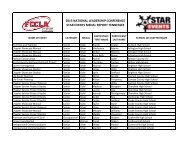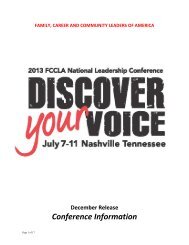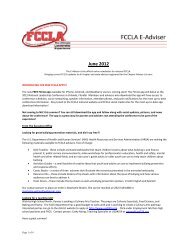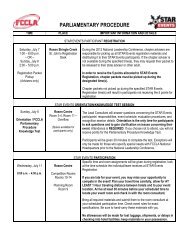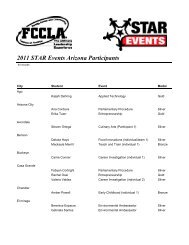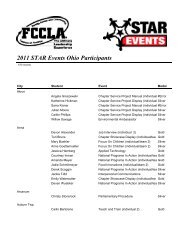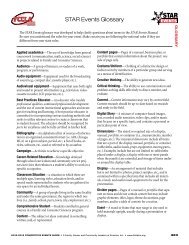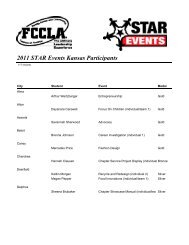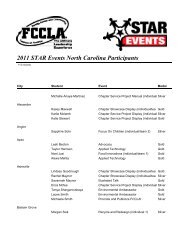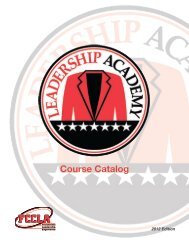CTSO Guide.pdf
CTSO Guide.pdf
CTSO Guide.pdf
You also want an ePaper? Increase the reach of your titles
YUMPU automatically turns print PDFs into web optimized ePapers that Google loves.
2<br />
<strong>CTSO</strong> li n k S T O<br />
fe d e ra l Pr O g r a m S<br />
Since President Woodrow Wilson signed the first national<br />
vocational education act in 1917, the federal government has<br />
provided funding for vocational education. (Over the years,<br />
vocational education has evolved into career and technical<br />
education.) The initial modest investment in 1917 of approximately<br />
$7 million now has grown to more than $1.2 billion.<br />
The Carl D. Perkins Career and Technical Education Act of<br />
2006 (otherwise known as the Perkins Act) provides funding<br />
for career and technical education through fiscal year 2012.<br />
The Act specifies required and permissible uses of these funds<br />
for activities at the local and state levels. The following listing<br />
highlights some of these required and permissible uses of<br />
funds and describes how <strong>CTSO</strong>s might help to successfully<br />
carry out these activities.<br />
State Leadership Activities<br />
This section of the Perkins Act details 9 required and 17 permissible<br />
uses of leadership funds. <strong>CTSO</strong> activities fit in many<br />
of these required and permissible uses.<br />
Required Use of Funds<br />
n Professional development programs—Each <strong>CTSO</strong>, as part of<br />
its national and regional meeting program, provides professional<br />
development opportunities for teachers and advisors.<br />
To qualify as professional development, workshops and inservice<br />
training must be high quality, sustained, intensive, and<br />
classroom-focused; help improve student achievement; help<br />
5



